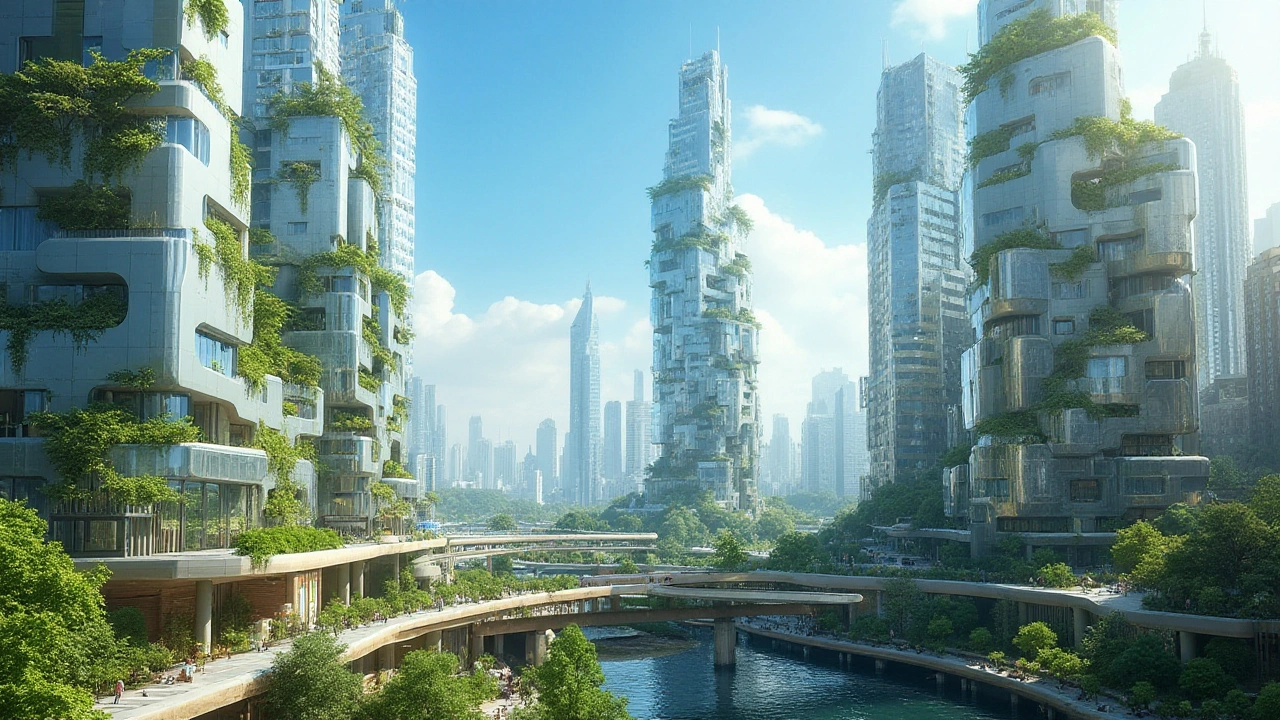High-tech architecture is reshaping our built environment by seamlessly integrating advanced technology with design ingenuity. This style emphasizes structures that are not only aesthetically striking but also functionally superior, efficiently utilizing resources to enhance sustainability. From dynamic facades to intelligent building systems, it pushes the boundaries of conventional architecture. Discover how these innovations are paving the way for the cities of tomorrow and offering practical solutions for urban challenges.
Futuristic buildings: how to read forms, tech, and purpose
Imagine a building that looks like a ship, breathes like a plant, or changes shape with the sun. Futuristic buildings do that. They’re not just shiny or strange — they solve problems, use new materials, and push design into practical territory. This page helps you spot what’s actually future-ready versus what’s just flashy.
How to spot a futuristic building
Look at shape first. Smooth curves, folded surfaces, and complex geometries often point to parametric or algorithm-driven design. Materials tell a story too: glass-and-steel skeletons, lightweight composites, and ETFE cushions show a focus on weight, daylight, and flexibility. Check the facade: adaptive shading, dynamic panels, or LED skins mean the building reacts to climate, light, or people. Inside, smart systems — automated ventilation, responsive lighting, and integrated sensors — are common. If a structure mixes artful form with visible tech that affects comfort or energy use, it’s likely more than just a novelty.
Style cues can also help. Neo-futurism and high-tech architecture favor expressive structure and transparency. Expressionist or constructivist influences bring bold forms and dramatic gestures. Postmodern touches might add color or irony, but true futuristic work centers function and adaptability alongside the look.
Where to see the best examples and what they teach
Want real-world checkpoints? Visit cities where budgets and ambition meet: Dubai and Shanghai showcase skyline-scale experiments; Singapore blends green tech with glass towers; Bilbao and London house daring cultural buildings. Look for museums, transport hubs, and research centers — these places often fund riskier design. When you study these sites, pay attention to lifecycle choices: how they handle heat, rain, daylight, and maintenance. The best futuristic designs cut operating costs while raising comfort and civic value.
Photography tip: capture how the facade changes with light or weather. A single-angle shot won’t show adaptive panels or reflective behaviors. Time your visit for morning or late afternoon to catch shadows and reveal form.
Want to borrow the look at home? You don’t need a spaceship. Start small: add curved furniture, slim LED strips, or a living wall. Use smart thermostats and motorized shades to mimic responsive facades. For renovations, favor lightweight materials and large glazing for daylight; pair them with smart shading to avoid overheating. These moves bring futuristic comfort without a full rebuild.
Futuristic buildings matter because they test new ways of living in cities: cleaner energy, better daylight, and flexible spaces. They’ll keep evolving — some ideas will fail, others will become standards. Your eye for what works will improve if you compare form, tech, and real performance. Use this tag to explore examples on our site—neo-futurism, high-tech, and expressionist pieces all offer practical lessons for today’s design choices.

